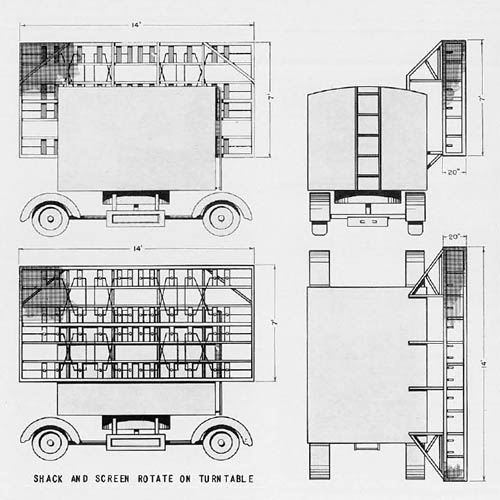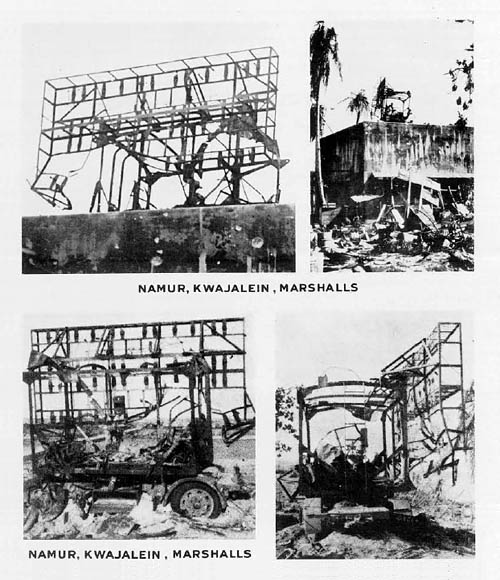From Japanese Electronics, OPNAV-16-VP101, Photographic Intelligence Report 1, Air Intelligence Group, Division of Naval Intelligence, Office of the Chief of Naval Operations, Navy Department, January 1945:
“Mobile Mattress” Radar
A later, and apparently more efficient, Radar type is the “Mobile Mattress” or “Mark I, Model 2”. The Radar operates at 200 mcs. and is identified by a small screen (14′ x 7′) mounted on a Japanese standard army trailer (type 94).
This Radar is being used more and more for land-based search, either alone or in conjunction with older types. It is frequently seen mounted in emplacements, suggestive of a permanent siting.
Below are reconstructed drawings made from photos of the Kwajalein set.
The shack, antennae, revolving mount and trailer may be separated for shipping purposes.
LOCATION KWAJALEIN TYPE (MK. I, MODEL 2) “MOBILE MATTRESS” ANTENNA 14′ x 7′ x 1 2/3′ FREQUENCY 200 MCS P.R.F. 800 – 1500 PULSE 3 1/2- 12 MAXIMUM RANGE 100 N. MI. The Mobile Mattress captured at Namur, Kwajalein, was mounted atop the standard concrete power house. Although the set is badly damaged, it is still possible to establish the important recognition features.
Note the similarity in design between this and the Attu type screen. The Mobile screen is much smaller, however.
Several additional views of the “Mobile Mattress” or Mark I, Model 2 are shown for familiarization. This set is very probably the best Japanese Search Radar in general use at present. The frequency is 200 megacycles per second and the maximum range is 100 nautical miles.













It looks a lot like a ground-based version the radar antennas that were mounted atop the superstructures of Japanese battleships during the later war.
Looks like the German portable radars.
Both were based on the German centimetric wave technology, rather than the far higher resolution millimeter wave technology that the British development of the cavity magnetron tube made possible.
Hey what do you know, the radar does look like mattress springs.
I think the labels are wrong in the second picture. Looks like the original source typed the same thing twice: “Namur, Kwajalein, Marshalls”.
Thanks for posting this up.
– Lester